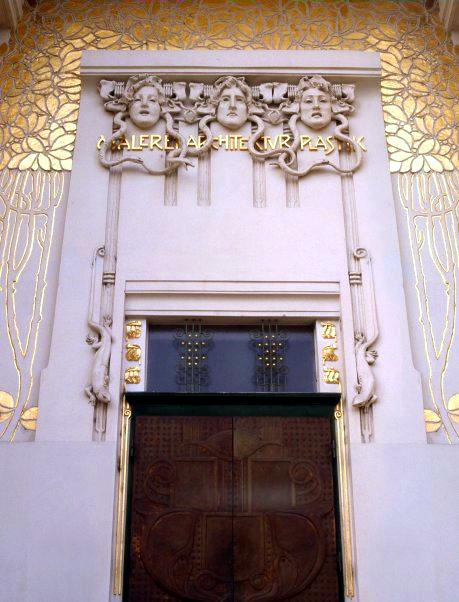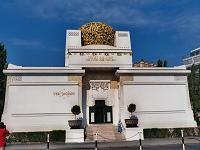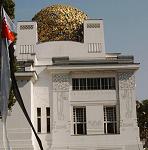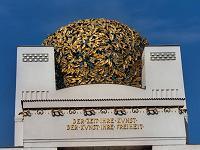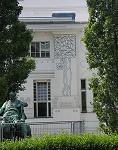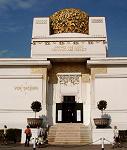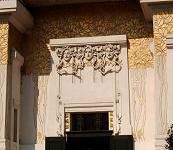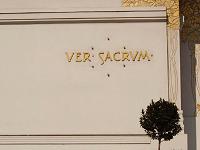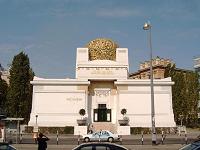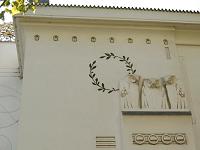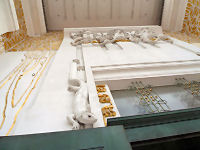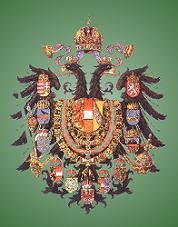The Belle Epoque in Europe
Austria
Vienna: The Exposition Hall of the Secession
Joseph Maria Olbrich (1867-1908)
When the Secession was founded, its members already agreed to build their own exposition hall. There was a young architect working in the studio of Otto Wagner whose name was Joseph Maria Olbrich being only 30 years old but he nevertheless was commissioned with the execution of the project. At first, the building was supposed to be erected on the Ringstraße (perimeter road), but Olbrich's ideas provoked heavy protest of Vienna's municipal council. Therefore, the territory to build the hall was chosen to be on the Friedrichstraße, so finally the municipal council gave a territory to the disposal of the Secession in order to erect a temporary exposition pavilion for a period of ten years maximally (according to the minutes of the session of November 17, 1897). The money needed to build the hall was earned in part at the Ist exposition in the k. k. Gartenbaugesellschaft (imperial and royal association of horticulture), in part given by sponsors, especially by Karl Wittgenstein, father of the philosopher Ludwig Wittgenstein. Within ten months, Olbrich developed the plan, adjusted it according to the necessary changings and revised it; on April 28, 1898, the laying of the foundation stone took place, and six months later only, on October 29, 1898, the building was already completed.
The building is divided into two parts: The symbolic "head", consisting of the representative entrance area under the dome of golden leaves, and the body situated in straight axis behind the entrance, the functional exposition wing, subdivided like a basilica into a raised central nave, two lower lateral naves and a closing nave, the whole area being covered by glass roofs shaped like tents spending a regular light to the whole inner space. The dome of golden laurel is enthroned above the entrance area, surrounded by four pylons. You can also find the laurel, the main floral ornament, on both side walls and on all pillars and it forms the crowns of the Gorgon heads symbolizing the three arts, painting, architecture and sculpture; around their hair are snakes. As well as the owls, created by Kolo Moser, they are all meant to keep misfortune outside and symbols of Pallas Athena, the greek goddess of wisdom, science and art.
Ver Sacrum, Sacred Spring, symbolizes the new start, the new art movement; originally, it was an ancient classical ritual according to which the youth born in the Sacred Spring had to leave their people in order to found a new community elsewhere. Ver Sacrum was also the title of a magazine published by the Secession from 1898 onwards.
The austere symmetry, the holy allusions, the large surfaces without interruption and the unusual decoration as much as the exposed situation in the city caused a scandal at the turn of the century. "It should be walls, white and bright, sacred and pure", wrote Olbrich. The people of Vienna mocked at the building calling it a "temple of tree frogs", a "cross between temple and stock", "tomb of the Mahdi", "crematorium", "mausoleum" or "egyptian tomb", the dome was called "cabbage head". This completely new shape disconcerted the people of Vienna because it could not be classified to any traditional style, therefore it fulfilled successfully the idea of a new artistic start. Nowadays, the Exposition Hall of the Secession is a Jugendstil must for any visitor of Vienna.
